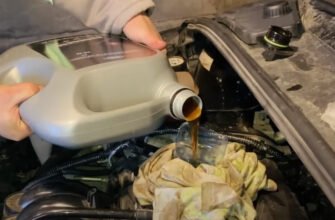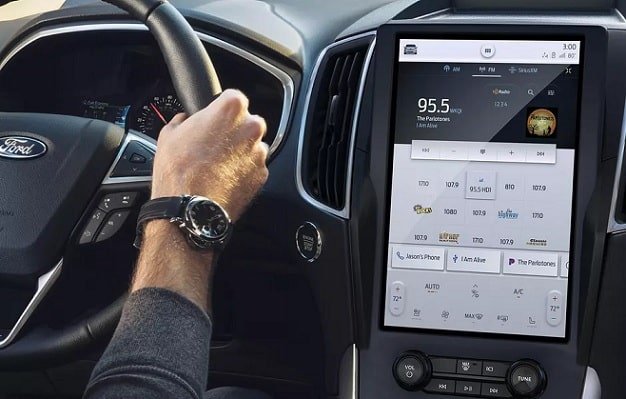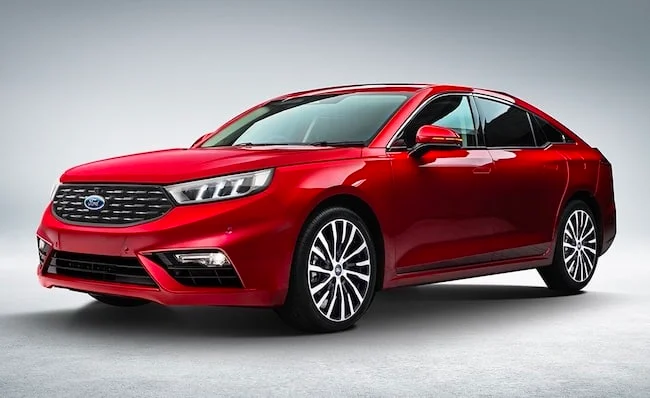If your Ford Edge Headlights suddenly fails to come up, there could be a bunch of reasons for that. But before you start worrying about why the headlights suddenly burned out, you should know that most of these issues have easy fixes.
If the cause is a simple burned-out bulb, then you could easily get a replacement and fix it yourself. However, if you’re dealing with a blown fuse or faulty wiring, you might need a little more experience with this kind of fixes. You will also need a voltmeter to help you isolate the problem with ease.
Regardless, this problem should be quite easy to fix for most but if you ever need help, then you might want to let your mechanic handle it.

Ford Edge Headlights Not Working: Likely Causes
- If your headlights seem dim, it could be due to foggy lenses that need to be cleaned
- Burned out bulbs
- Charging system issue
- Faulty switch or relay
- Issues with ground or power
Ford Edge Headlights Not Working: Fixes
Check for Burned Out Bulb
If you notice that only one of the headlights is bad, then the problem could be as simple as a burned-out bulb. While it might seem pretty hard to believe that one bulb could burn out before the other even though both are exposed to the same conditions, it is not impossible for such to happen.
However, before you think of replacing the bulb, it would be best to first check the electrical connector for any signs of damage. If you notice that the connector has come loose, you could push it back and this may fix the problem. But before doing that, you should go even deeper to check why it came loose in the first place. This should prevent the problem from repeating itself in the future.
Also, before replacing the burnt-out headlight capsule, you should ensure that there are no outside causes aside from a normal burn-out. If your car uses halogen capsule, it should last anywhere from 500 to 1,000 hours. If yours didn’t run that long, then you should check for other problems.
Look out for things like water or condensation inside the headlight casing. Also, check the seal for signs of wear or deterioration. You should also check the housing itself for cracks as this could make it easier for water to get inside. If this happens, the lifespan of the headlight capsule will be greatly reduced. If you notice this problem, then you would have to change the entire headlight assembly.
If you confirm that the problem is just a burned-out bulb, you would have to get a replacement. However, if the problem persists and you find yourself replacing your headlight bulb way too often, then there could be an underlying problem that should be fixed.
The problem could be from your installation process. You need to ensure that the bulb is held correctly with no unnecessary motion. If you move too much, the bulb could break or end up burning out much faster than supposed to. When installing, you should always handle the bulb with gloves and not your bare hands.
Fixing Both Headlights
If both headlights won’t come on then you’re probably not dealing with burned-out bulbs, however, if one headlight bulb burns out first, and the other bulb fails later on, then you might have another issue on your hands.
If you still think that the bulbs are faulty, you could get a voltmeter and check for power at the headlights. Simply turn the headlight switch on, then connect the negative lead on your meter to a known ground. The last step is to touch the positive lead to each headlight connector terminal.
If the bulbs are burned out, then one of the terminals will show battery voltage while the other two will show nothing. You can try to activate the high beams. This will result in a different terminal showing battery voltage. If this is the problem, then replacing the bulbs should get the bulbs working.
If both headlights bulbs stop working, the first place to check is the headlight fuse. You might find one or multiple fuses for your headlight but you would have to look for the blown one and replace it.
When replacing the blown headlight fuse, only use a new one with the same amperage rating. If the new fuse also blows, then you should check for other faults in the circuit.
If you find that the fuse is intact, then you need to check for power using your voltmeter. Both sides of the fuse should show battery voltage, but if this doesn’t happen, then you’ll have to look at the wiring between the battery and fuse block.
Also, locate and inspect the headlight relay for signs of fault. You should pull it and shake it, then listen for any sound of something rattling inside. If you hear that, then it has probably failed. If you notice discoloration on the terminals or base, it could also be a problem.
To confirm if the relay or switch is the problem is a big task that would require you to check if the relay receives power when the headlight switch is activated. You might get the best results if you let a mechanic handle it.
Headlights Flickering?
If your headlights flicker on and off continuously, it could be a sign of a bad connection. You should check your battery’s clamp connection as they do get loose from the constant vibration of the engine. In some cases, the entire headlight wiring assembly would have to be replaced to solve the problem.
Headlight’s Low-beams Malfunctioning?
If this is the problem, you can try a couple of fixes to solve it. Faulty low-beam lights are usually the sign of a blown fuse or faulty wiring. They could also be a sign of a burned-out bulb. You may need to check for power using a voltmeter to confirm the problem. If there is no power running to the headlight, then you would have to get a mechanic to check and fix the wiring.







